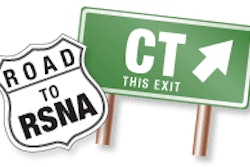Monday, November 26 | 3:10 p.m.-3:20 p.m. | SSE05-02 | Room S404CD
Cutting the contrast dose by two-thirds doesn't degrade image quality in CT pulmonary angiography (CTPA) acquired on a 128-detector-row scanner, say researchers from Case Medical Center and Case Western Reserve Medical School.Using the group's 128-detector-row scanner (Somatom Flash, Siemens Healthcare) with the standard 90- to 100-mL contrast dose left a large amount of contrast still in the injection vial when the scan was completed -- and using 30 cc of contrast was still diagnostic for the scan, Dr. Robert Gilkeson told AuntMinnie.com.
"We scan many elderly patients with borderline renal function who need CTAs; we also scan vulnerable populations such as young patients with sickle cell disease, myasthenia gravis, etc.," he said, and meanwhile, the body of literature showing problems with iodinated contrast continues to accumulate.
The researchers prospectively scanned 20 patients undergoing CTPA using 30 cc of iodinated contrast and a matched control group that received standard doses on a 64-slice scanner. An expert reader examined both sets of data, rating image quality and diagnostic confidence in inclusion or rule out of pulmonary embolism.
"The data showed equivalent or improved quality and enhancement despite significant decrease in contrast dose," Gilkeson said, adding that the results are "encouraging for the use of less contrast with similar clinical outcomes." The contrast dose savings would have a positive economic impact as well, he said.



















